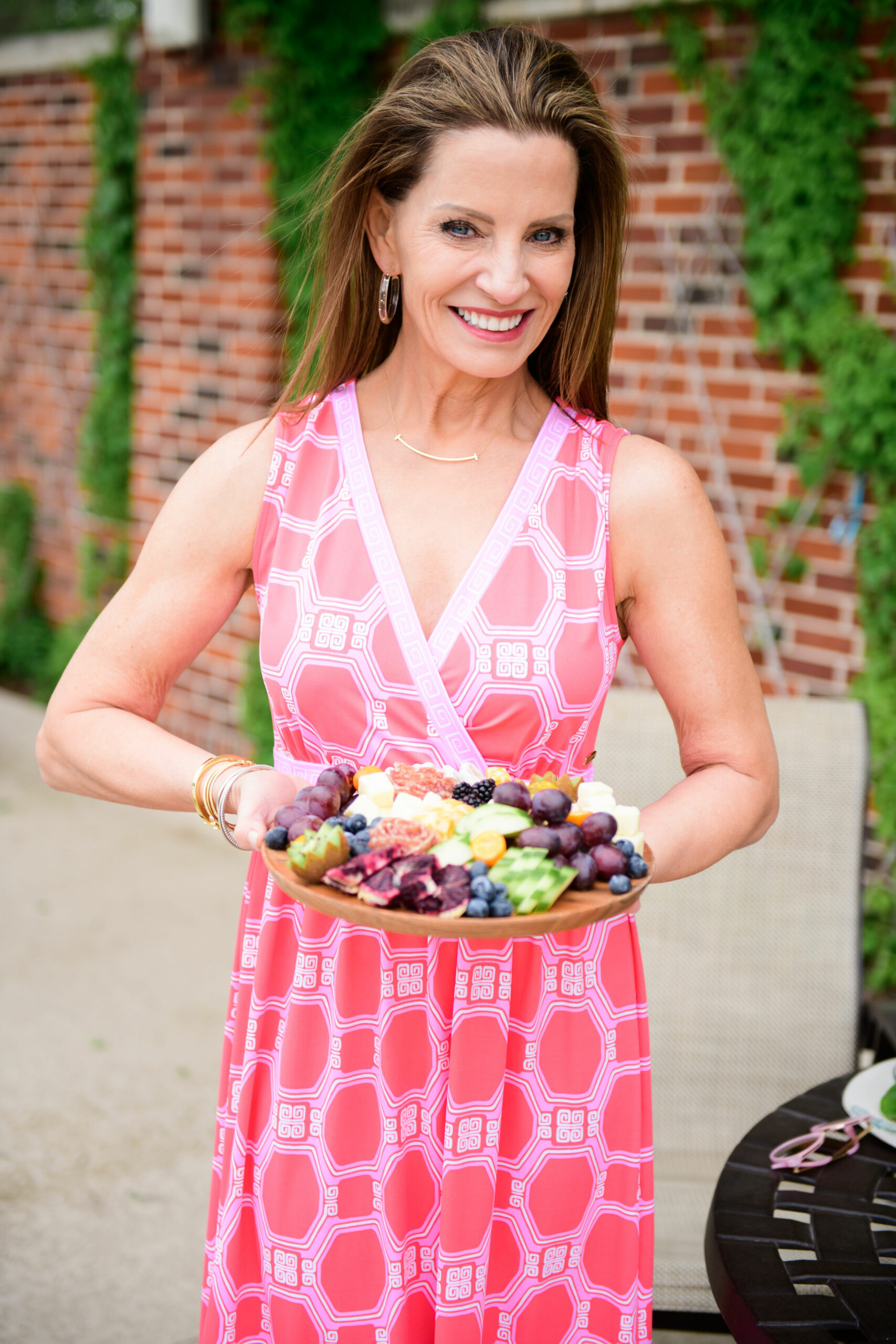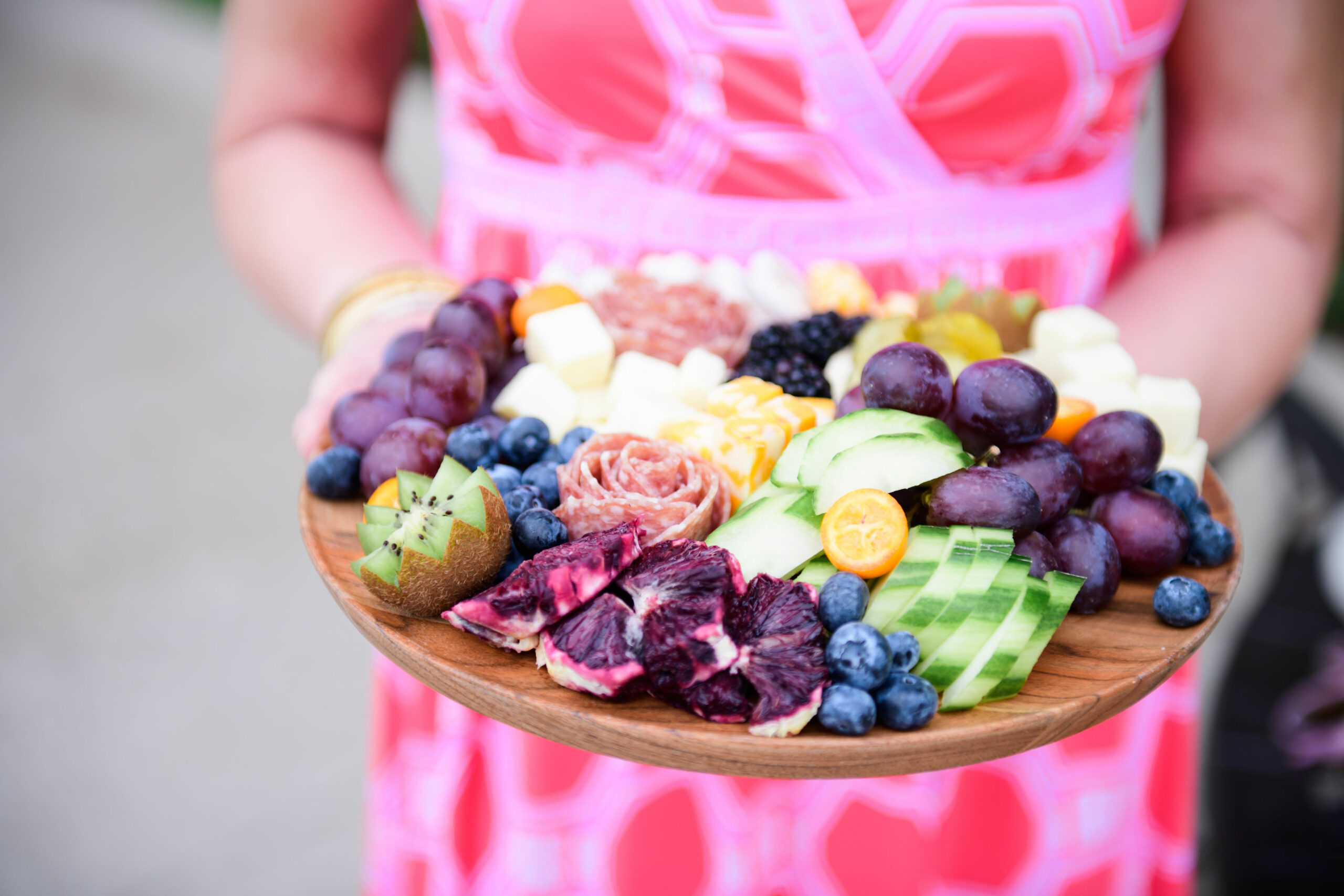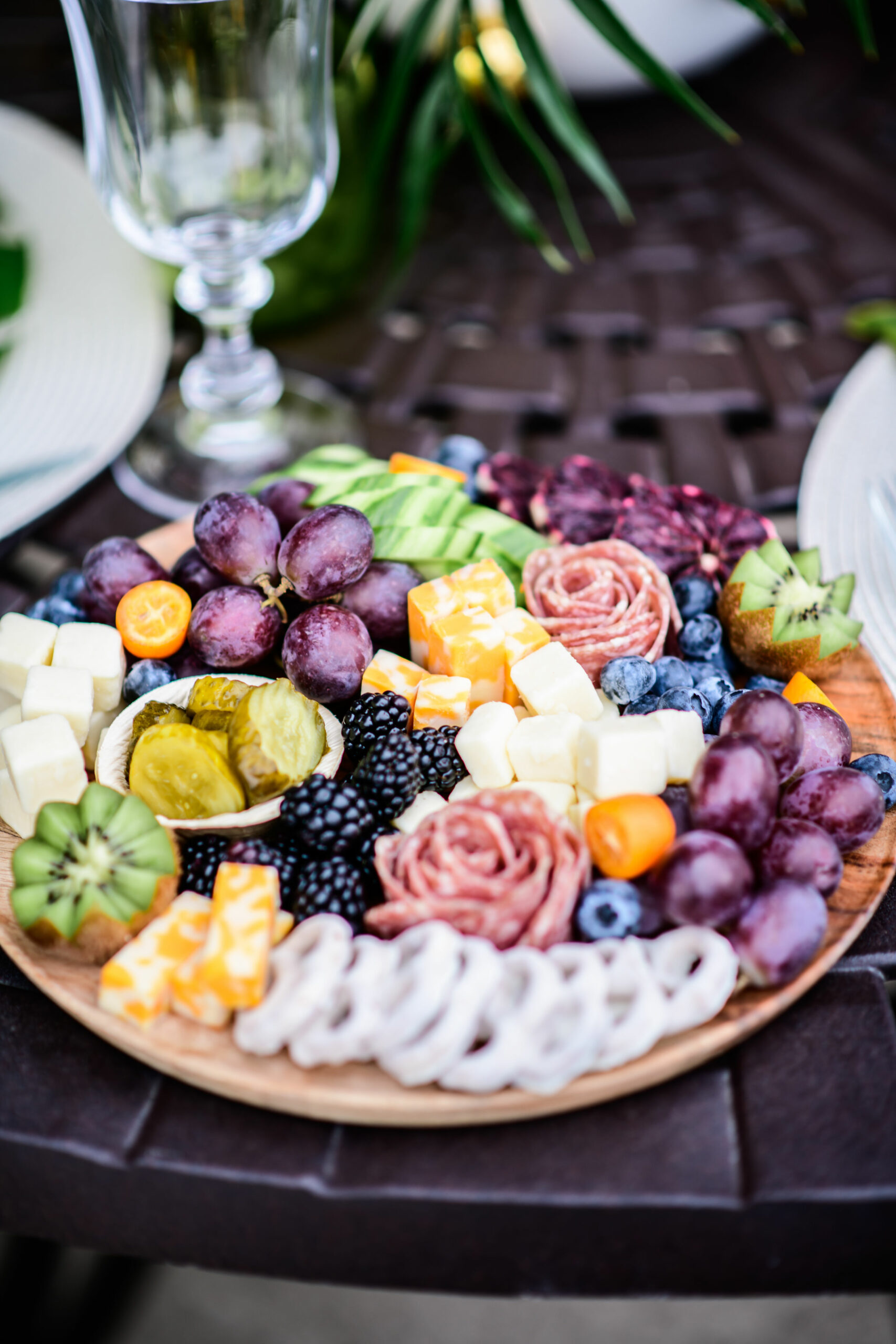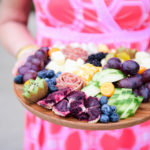
The Charcuterie Board… a visually satisfying, incredibly scrumptious and easy way of entertaining guests! Impressive selections of delicately sliced and cured meats, cheeses, crackers, grilled breads, dried and fresh fruits, nuts, olive oils, spreads and more create flavors that will please all guests! There is certainly something for everyone! Charcuterie is an art form regardless of your style. You may choose a rustic style with piles of market items or perhaps a delicate and fixed presentation. I love them all as there are so many variations, colors, textures and designs. These beautiful boards are from Claudia Sheddy of My Sweet Roots! Her amazing talent is captured in her boards, which are a variety of her favorite ingredients and no two boards are alike! That is the beauty of her artful creations! Over the years I’ve created many charcuterie boards, and found the below system is what works best for me. I hope this helps make your charcuterie board dreams a reality!

Foundation
Begin with your palette and size and get creative. I love repurposing wood cutting boards (like this one), a stunning piece of marble (like this one) or my very favorite, an old unique piece of black slate, that was simply broken, and has now hosted many friends and family members with a vast array of ingredients.
Creating Interest with the 3-3-3-3 Rule
Choose three cheeses, three meats, three starches, and three accompaniments for a perfect and balanced board, every time! Opt for seasonal ingredients that are rich in color like pomegranates, figs, and thinly sliced pears and apples. Grilled vegetables and fruit look and taste amazing, too!
Bowls and ramekins
Make sure you have small bowls or tiny ramekins that can house honey (I love mine with honeycomb), unique jams, mustard, confits…the possibilities are simply endless! I LOVE the size of these porcelain serving dishes.
Cheese, please!
Brie, goat, blue, cheddar, gouda, so many FABULOUS options. Choose a variety of soft, semi-soft and hard cheese. Offer a selection of sliced, cubed or in wedge form and it will be so beautiful!
Meats
A variety of cured meats always finds its way onto my board. Dried and cured meats are so flavorful. Prosciutto is lovely and a delicacy that can be beautifully staged. Soppressata is a personal favorite!
Charcuterie and Cheese Board
Ingredients
- A food-safe surface, such as marble, wood, stone, or glass.
- Portion Recommendations to Keep in Mind: 2 oz. cheese per person & 1-2 oz. meat per person
- 2-3 Soft Cheese Selections, brie, camembert, cambozola, burrata, bleu, fontina, goat, etc.
- 2-3 Semi-Hard Cheese Selections gouda, white cheddar, manchego, gruyere, etc.
- 1 Spreadable Cheese mini mozzarella cheese balls, boursin, cream cheese, etc.
- 8 Oz. Dried and Cured Meats, dried salami, soppressata, felino, casalingo, etc.
- 1 Lb. Red and green Seedless Grapes, on the vine
- 2 Kiwi, washed, peeled, and sliced
- 2 Perisimmons, washed and cut into slices
- 8 Oz. Blueberries, washed and drained
- 12 Oz. Strawberries, washed and drained, tops on
- 8 Oz. Raspberries, washed and drained
- 1, 8 Oz. Package Dark Sweet Cherries
- ½ Lb. Baby Cucumbers, cut into 1/2 inch chunks
- 1 Lb. Sugar Snap Peas
- 1, 8 Oz. Package of Baby Beets, cut into quarters
- 2 Baguettes. slices
- 1 Package Crackers
- Pretzels, Sticks, knots, twists, or crisps (chocolate dipped pretzels are fabulous for a touch of sweetness)
- Marcona Almonds, dried and salted
- Seasoned Cashews
- Additional Suggestions: Marmalade, fruit spreads, honey, other jams, olives, tiny pickles, mustards, flavored crackers, assorted dried fruits
Instructions
- Select a board or surface, small ramekins, appetizer forks, spreaders, spoons.
- Clean the board or surfaces to be used and dry thoroughly.
- Wash and thoroughly dry fruits and vegetables.
- Unwrap any cheese and meats, bringing to room temperature.
- Slice meat and cheeses.
- Begin at the center of the board and arrange items on board. Group contrasting colors and shapes together to create more visual interest.
- Replenish board as needed!
Additional Essential Ingredients:
Crackers
Artisan breads, sliced and grilled
Olives
Chocolate
Fresh herbs
Olive oils with sea salt and freshly ground black pepper
Fresh and dried fruit
Fresh vegetables
Gherkins or pickle selection
Pickled vegetables
Dips
Helpful Tips
- One serving utensil per cheese. Offer a variety of cheese utensils that can slice, crumble, spear or crumble. This set is fabulous and one of my personal favorites!
- Allow cheese time to come to room temperature before serving to bring out the flavor of the cheese.
- Crackers and bread can be served directly on the board or I like using a unique vessel if space is limited.
- Serve cheese with picks like these! Aesthetically pleasing and so practical!







COMMENTS